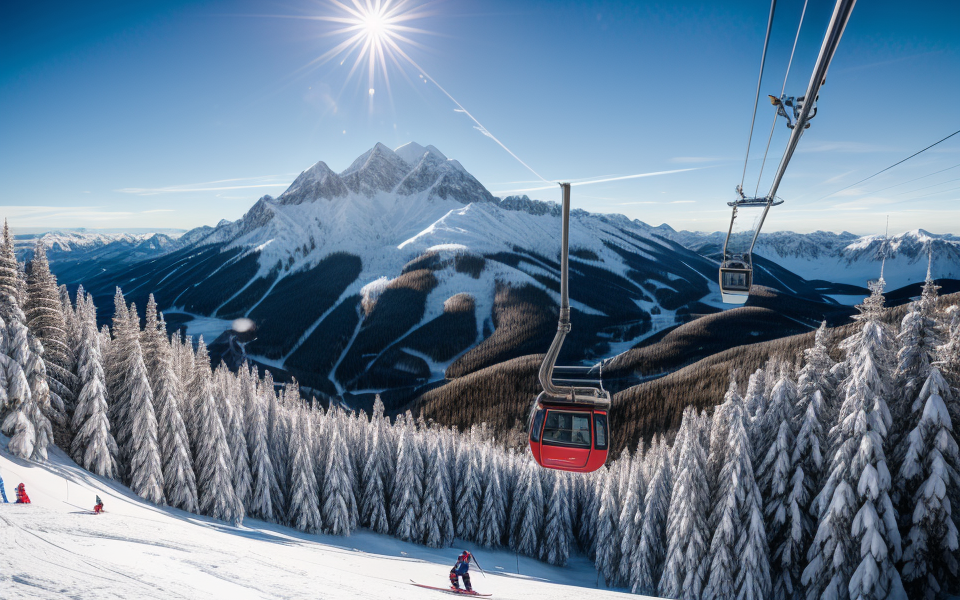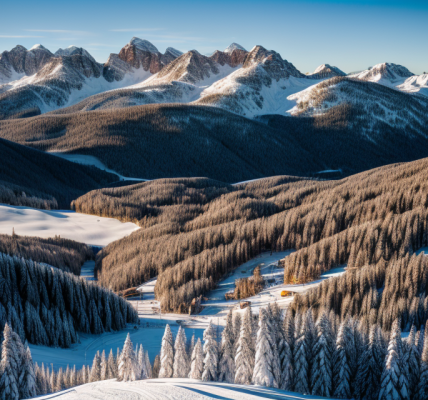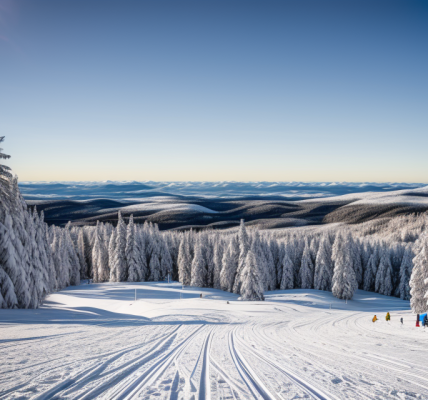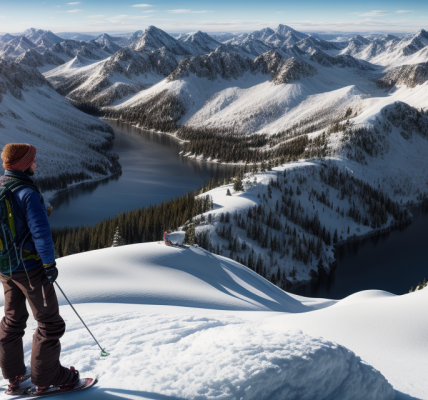As the world continues to grapple with the ongoing COVID-19 pandemic, many businesses and industries have been forced to adapt to the new normal. The ski industry is no exception, with many resorts being forced to close their doors to prevent the spread of the virus. However, there are still some ski resorts that are staying open, despite the restrictions and challenges posed by the pandemic. In this article, we will explore which ski resorts are remaining open and how they are managing to do so while prioritizing the safety of their guests and employees.
As of my knowledge cutoff in September 2021, I can provide a list of some ski resorts that were known to be staying open despite COVID-19 restrictions. These include popular destinations such as Vail Resorts in Colorado, which had implemented various safety measures and operational changes to accommodate guests while adhering to local health guidelines. Another example is the Whistler Blackcomb resort in British Columbia, Canada, which had also implemented similar safety measures and protocols. It’s important to note that the situation may have changed since then, and it’s always recommended to check the latest updates and guidelines from the resorts themselves or local authorities before planning a visit.
List of Ski Resorts Still Operating
North American Resorts
Several ski resorts in North America have continued to operate despite the COVID-19 pandemic. Some of the most popular ski resorts that have remained open include:
- Ski resorts in Canada: Many ski resorts in Canada have been able to stay open due to the country’s strict health and safety protocols. Resorts such as Whistler Blackcomb in British Columbia and Mont Sainte-Anne in Quebec have remained open for skiers and snowboarders to enjoy.
- Ski resorts in the United States: In the United States, ski resorts in states such as Colorado, Utah, and Vermont have been able to stay open due to their ability to implement safety measures such as limiting capacity and requiring masks. Some of the most popular ski resorts that have remained open include Vail Resorts, Aspen Snowmass, and Killington Resort.
It is important to note that while some ski resorts have been able to stay open, others have had to close due to local restrictions or outbreaks of the virus. Skiers and snowboarders should check with individual resorts before planning a trip to ensure that they will be able to operate.
European Resorts
Several ski resorts in Europe have continued to operate despite the COVID-19 pandemic. Two notable countries with operating ski resorts are Switzerland and Austria.
Switzerland
Switzerland has a number of ski resorts that have remained open during the pandemic. One of the most popular resorts is the Swiss Ski Resort of Zermatt. Despite the challenges posed by the pandemic, Zermatt has been able to maintain its operations and offer a safe environment for skiers. Other ski resorts in Switzerland that have remained open include Davos, St. Moritz, and Verbier.
Austria
Austria is another European country that has been able to keep its ski resorts open during the pandemic. One of the most popular resorts in Austria is the Ski Resort of Kitzbühel. The resort has implemented several safety measures to ensure the safety of its visitors, including limiting the number of people on the slopes and requiring masks to be worn in public areas. Other ski resorts in Austria that have remained open include Salzburg, Innsbruck, and Schladming.
Despite the challenges posed by the pandemic, these European ski resorts have been able to adapt and continue to offer a high-quality skiing experience to their visitors. With strict safety measures in place, skiers can enjoy the slopes while still being able to maintain social distancing guidelines.
Other International Resorts
Despite the challenges posed by the COVID-19 pandemic, many ski resorts around the world have found ways to adapt and continue to operate. One such example is the popular ski resort in Niseko, Japan, which has implemented a number of measures to ensure the safety of its visitors. These measures include reduced lift capacity, increased cleaning and sanitation efforts, and the implementation of a health screening process for all guests.
Another example is the ski resort in Queenstown, New Zealand, which has also implemented similar safety measures. The resort has also introduced a “booking only” system, where guests must reserve their spot in advance to avoid overcrowding. This system has been well received by visitors, who appreciate the added safety measures and the ability to plan their visit in advance.
Other international resorts that have remained open during the pandemic include those in the Swiss Alps, the Rocky Mountains in the United States, and the Canadian Rockies. These resorts have all implemented various safety measures and protocols to ensure the safety of their visitors, while still providing them with the opportunity to enjoy the winter sports they love.
Factors Contributing to Resorts Staying Open
Safety Protocols
Mask mandates
One of the primary safety protocols being implemented by ski resorts that are staying open despite COVID-19 restrictions is the mandatory use of masks. This measure is aimed at reducing the spread of the virus by limiting the transmission through respiratory droplets. The mask mandates typically require skiers and snowboarders to wear masks while riding lifts, walking around the mountain, and in all other areas where social distancing may be difficult to maintain. Some resorts have even gone a step further by providing masks to guests who may have forgotten to bring their own.
Social distancing measures
Another safety protocol being implemented by ski resorts is the implementation of social distancing measures. This includes reducing the capacity of lifts, spreading out skiers and snowboarders on the mountain, and increasing the distance between people in lines and at ski schools. Some resorts have also implemented one-way traffic on the mountain to reduce the risk of close contact between skiers and snowboarders. These measures are designed to reduce the risk of transmission of the virus and to ensure that everyone can enjoy the slopes safely.
Reduced capacity
In addition to social distancing measures, many ski resorts are also reducing their capacity to ensure that they can maintain the necessary safety protocols. This includes reducing the number of skiers and snowboarders on the mountain at any given time, as well as reducing the number of people in lodges and other indoor areas. Some resorts have even implemented reservation systems to ensure that the number of people on the mountain does not exceed capacity. By reducing capacity, ski resorts can ensure that everyone can maintain a safe distance from one another and reduce the risk of transmission of the virus.
Economic Impact
Financial Losses for Resorts and Local Economies
Ski resorts generate significant revenue for both the resorts themselves and the local economies in which they are located. According to a report by the National Ski Areas Association, the ski industry contributes over $12 billion to the U.S. economy annually. This revenue is generated through lift ticket sales, rental equipment, food and beverage services, and other retail items. However, the COVID-19 pandemic has led to a decline in visitation and revenue for many ski resorts, resulting in financial losses for both the resorts and the local economies that depend on them.
Importance of Tourism Industry
The tourism industry is a major contributor to the economy of many countries, and ski resorts are a significant part of this industry. In addition to generating revenue for the resorts and local economies, ski resorts also provide employment opportunities for many people. The COVID-19 pandemic has had a devastating impact on the tourism industry as a whole, with many resorts and businesses forced to close temporarily or permanently. Staying open, even with restrictions in place, allows ski resorts to continue to generate revenue and provide employment opportunities, which is essential for the economic recovery of the tourism industry.
Government Regulations
- Differences in restrictions and guidelines between countries and states
- In some countries, such as Switzerland and Austria, ski resorts have been allowed to remain open with certain restrictions in place, while in others, such as France and Italy, they have been forced to close completely.
- In the United States, the decision to keep ski resorts open or closed has been left up to individual states, leading to a patchwork of regulations across the country.
- Adaptation of resorts to comply with regulations
- Many ski resorts have implemented a range of measures to comply with government regulations, including limiting the number of visitors, requiring masks, and increasing cleaning and sanitation efforts.
- Some resorts have even gone so far as to create “quarantine packages” for guests who test positive for COVID-19 while on vacation, in order to prevent the spread of the virus.
- In addition, some resorts have implemented digital tools, such as online reservations and contactless payments, to help reduce the risk of transmission.
Resorts’ Adaptation Measures
Altered Operations
As a result of the COVID-19 pandemic, many ski resorts have been forced to make significant changes to their operations in order to prioritize the safety of their guests and employees. Here are some of the ways in which ski resorts have adapted their operations:
- Limited services and amenities: In order to reduce the number of people gathering in indoor spaces, many ski resorts have reduced or eliminated certain services and amenities. For example, some resorts have closed their ski rental shops, lodge restaurants, and other indoor common areas. This has also led to a reduction in staffing levels, as many resorts have had to lay off employees or reduce their hours.
- Increased focus on outdoor activities: To encourage social distancing and reduce the risk of transmission, many ski resorts have shifted their focus towards outdoor activities. This includes offering more ski-touring and backcountry options, as well as increasing the availability of outdoor dining and other outdoor amenities. Some resorts have also implemented new safety measures, such as requiring masks outdoors when social distancing is not possible.
Overall, these altered operations have allowed ski resorts to continue operating during the pandemic while still prioritizing the safety of their guests and employees.
Enhanced Safety Measures
In order to provide a safe environment for guests, ski resorts that have chosen to remain open during the COVID-19 pandemic have implemented various enhanced safety measures. These measures are aimed at reducing the risk of transmission and ensuring the well-being of visitors. Some of the key enhanced safety measures include:
- Increased cleaning and sanitation: Ski resorts have significantly increased the frequency of cleaning and sanitation of all high-touch surfaces, such as lift seats, rails, and handles, as well as restrooms and common areas. Resorts have also implemented enhanced cleaning protocols for accommodations and common areas, including the use of disinfectants that are effective against viruses.
- Contactless transactions and check-in processes: To minimize contact between guests and staff, ski resorts have implemented contactless transactions and check-in processes. This includes online or mobile check-in, touchless payment options, and mobile key cards for accommodations.
- Reducing capacity: To ensure social distancing, ski resorts have reduced their capacity limits, which may include limiting the number of guests allowed on the mountain at any given time, as well as reducing the number of guests allowed in lodges and other indoor areas.
- Mask requirements: Most ski resorts require guests to wear masks in all indoor public spaces and in outdoor areas where social distancing cannot be maintained. This requirement may vary depending on local regulations and guidelines.
- Screening and health checks: Some ski resorts have implemented screening and health checks for guests, including taking temperatures and asking about recent health symptoms or exposure to individuals with infectious diseases.
- Increased staff health and safety measures: Ski resorts have also implemented additional measures to protect their staff, including providing personal protective equipment (PPE), increased training on hygiene and safety protocols, and implementing screening measures for staff before they begin their shift.
Overall, these enhanced safety measures are aimed at reducing the risk of transmission of COVID-19 and providing a safe environment for guests to enjoy the ski season. By implementing these measures, ski resorts can help prevent the spread of the virus and ensure the well-being of visitors and staff alike.
Support for Local Communities
As part of their adaptation measures, some ski resorts have taken steps to support the local communities where they are located. These initiatives are aimed at providing assistance to the communities that depend on the tourism industry for their livelihoods.
Partnerships with Local Businesses
One way that ski resorts are supporting local businesses is by partnering with them. This can take many forms, such as offering discounts to local residents on lift tickets or providing marketing support to local businesses. These partnerships not only benefit the local businesses but also help to foster a sense of community among the resort’s employees and visitors.
Donations to Community Relief Efforts
In addition to partnering with local businesses, some ski resorts are also making donations to community relief efforts. These donations can help to support a variety of causes, such as providing financial assistance to residents who have lost their jobs due to the pandemic or funding community programs that provide essential services to those in need. By supporting these efforts, ski resorts are helping to ensure that the communities where they are located are able to weather the economic impacts of the pandemic.
FAQs
1. What ski resorts are staying open despite COVID-19 restrictions?
Many ski resorts have announced plans to remain open, despite local or national restrictions on travel and large gatherings. However, it’s important to note that these plans are subject to change based on local regulations and the severity of the outbreak in the area. Resorts are implementing safety measures such as reduced capacity, social distancing, and enhanced cleaning protocols to ensure the safety of their guests.
2. How can I find out which ski resorts are open?
You can check the websites of individual ski resorts or search for comprehensive lists online. Many ski resorts are posting updates on their websites regarding their operating status, safety protocols, and any changes to their schedule. Additionally, there are several websites that compile information on open ski resorts, including their operating status, restrictions, and availability of rentals and lessons.
3. Are ski resorts operating at full capacity?
In order to maintain social distancing and reduce the risk of COVID-19 transmission, many ski resorts are operating at reduced capacity. This means that some lifts and trails may be closed, and guests may need to make reservations in advance to ensure availability. Some resorts are also limiting the number of guests allowed in indoor facilities such as restaurants and lodges.
4. What safety measures are ski resorts implementing?
Ski resorts are implementing a variety of safety measures to reduce the risk of COVID-19 transmission. These may include reducing capacity, requiring masks, enforcing social distancing, and increasing cleaning and disinfection protocols. Some resorts are also offering contactless rentals and ticket purchases, and limiting the use of shared equipment.
5. What should I do if I’m feeling unwell while at a ski resort?
If you’re feeling unwell while at a ski resort, it’s important to inform a resort employee immediately. Many resorts have designated isolation areas for guests who are feeling unwell, and they may also offer medical assistance if needed. If you’re experiencing severe symptoms, you should seek medical attention as soon as possible. It’s important to remember that ski resorts may have different policies regarding illness, so it’s a good idea to review their guidelines before your visit.




